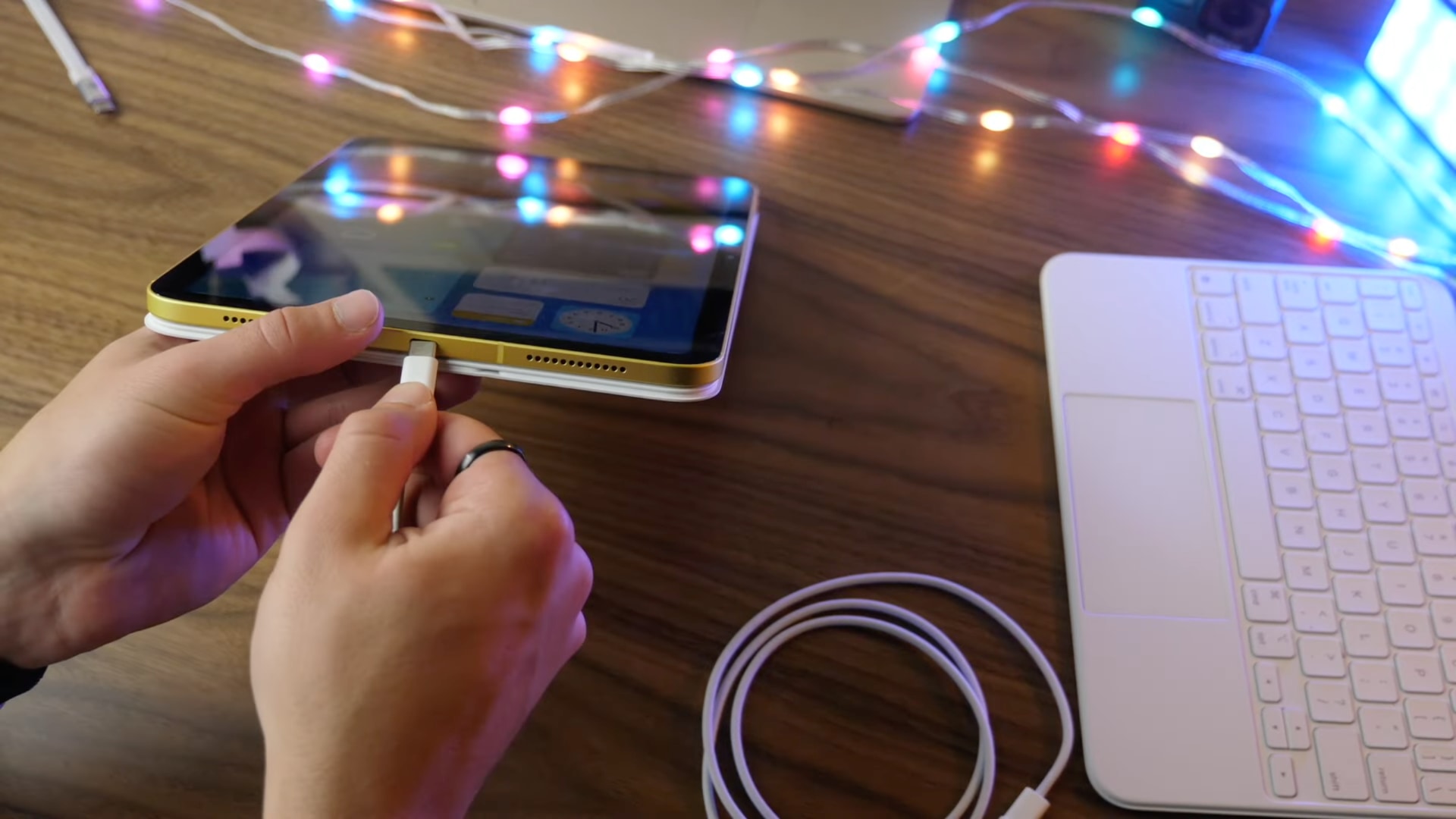The new $449 iPad’s USB-C port features the same (slow) USB 2.0 data transfer speeds as its Lightning-based ninth-generation predecessor.

- What’s happening? Despite its USB-C port, the new tenth-generation iPad transfers data at up to 480 Mbps — just like its Lightning-based predecessor.
- Why care? Apple has withheld this important piece of information, misleading some shoppers who didn’t expect the device’s USB-C port to be slow.
- What to do? If you transfer lots of data between your iPad and the computer, then it may be a smart idea to buy an iPad mini or iPad Air instead.
How fast is the USB-C port on iPad 10?
Despite being equipped with a USB-C port, the tenth-generation iPad is limited to the same USB 2.0 speeds as its Lightning-based ninth-generation predecessor.
This means data transfer speeds of up to 480 Mbp for the iPad 10, which works out to about sixty megabytes per second. Now, the most recent 3.1 revision to the USB-C protocol is capable of transferring data at up to 10 Gbps, which works out to about 1250 megabytes per second (or 1.25 gigabytes per second).
But the new iPad can only dream of hitting those numbers.
USB-C performance on other iPads
In comparison, the latest M1 iPad Air supports up to 10 Gbps data transfer speeds over its USB-C connection. The iPad mini with its A15 Bionic chip does up to 5 Gbps (about 625 megabytes per second) over its USB-C port.
Apple has not clarified that the new iPad’s USB-C port is actually limited to USB 2.0 speeds. Were it not for The Verge‘s Dan Seifert, we would be still kept in the dark because Apple’s iPad Tech Specs page also makes no mention of this.
Another fun fact: the iPad 10’s USB-C port supports 4K 30Hz or 1080p 60Hz external displays. It won’t output 4K resolution video at sixty frames per second.
At the very least, Apple could’ve kept the headphone jack.
Why is the iPad 10’s USB-C port slower vs. other iPads?
That’s likely due to the CPU. Not all Apple chips are created equal. For instance, the M1 powering the fifth-generation iPad supports the full USB-C 3.1 data transfer speeds of up to 10 Gbps. By comparison, the iPad 10 runs Apple’s A14 Bionic chip.
On the other hand, the M1 and M2 chips that power iPad Pros support Thunderbolt 3 for data transfer up to 40 Gbps—or about five gigabytes per second.
Can a software update fix this?
No, that won’t be possible. Some Apple chips support only USB-C while others also support Thunderbolt I/O. Read: How to transfer photos from iPad to Mac
As a sealed computer, the iPad doesn’t support swapping the CPU, RAM and other components so you’re stuck with what you have. In short, don’t count on a future iOS software update improving USB-C transfer speeds on the iPad 10.